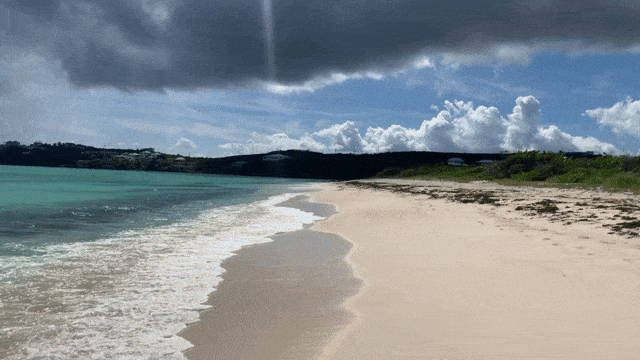 I’m walking along Anguilla‘s beautiful Shoal Bay East beach. It’s paradise. And while I’m walking, I’m thinking about being on the edge.
I’m walking along Anguilla‘s beautiful Shoal Bay East beach. It’s paradise. And while I’m walking, I’m thinking about being on the edge.
At the edge between sand and sea, where the waves crash and splash over my feet, it’s stunning. The sand is perfect. The water is clear and blue. Yet, just a hundred metres offshore, massive waves crash against the coral reefs that protect this little island. If I were out there, I’d be dead.
I turn towards the ocean, facing north. There’s nothing but water for two thousand miles; an open stretch of the North Atlantic that ends at the rocky coast of Nova Scotia.
Physical edges
It’s interesting, being on the edge.
We humans evolved in natural environments where physical transitions signaled safety, danger, opportunity, or mystery. We’re wired to notice edges. The boundary where bluff becomes beach. Where wet becomes dry. Our Vermont home is bordered by such an edge: our tidy-ish garden that gives way to twenty acres of unmanaged beech, maple, and pine. A frontier between the cultivated and wild—beloved by certain wildlife, and by me.
For almost all of human history, we lived in places where edges were formed by plate tectonics, weather, and evolution. Today, most of us inhabit environments defined by manufactured boundaries. Cities, buildings, roads, homes, screens. The edges we now live among are largely designed. They reflect our personal choices, our cultures, our economies, and our technologies. And our made-edge environments shape us in return.
Psychic edges
And of course, not all edges are physical.
We live on psychic edges too—zones of feeling, awareness, and relational boundary. Think of interpersonal space: how it changes moment to moment, person to person, culture to culture. Or those charged moments when a conversation pivots, when an acquaintance’s tone shifts, when the unspoken becomes clear.
Psychic edges can form suddenly, like a flash of realization. Or slowly—like the long drift into intimacy. The moment you truly connect with someone is also an edge: you cross a threshold, one that didn’t exist a moment before. And there’s the edge of vulnerability—the point you choose to say what you’ve been hesitating to say, and wait, uncertain, to see how it lands.
Edges are where change happens. They’re dynamic, unstable, and generative. That’s true in ecology. It’s true in relationship. It’s true in identity.
And it’s where the work worth doing often begins.
What edges ask of us
Edges—physical or psychic—ask something of us. They command attention. They stir curiosity. They challenge comfort. And often, they offer us something precious: a way to see more clearly, to feel more deeply, to shift perspective.
The beach, the awkward pause in conversation, the spark of sudden insight—they are all thresholds.
And when we meet them with presence rather than avoidance, they become places of transformation.
Being on the edge isn’t a danger to escape.
It’s an invitation to grow.
